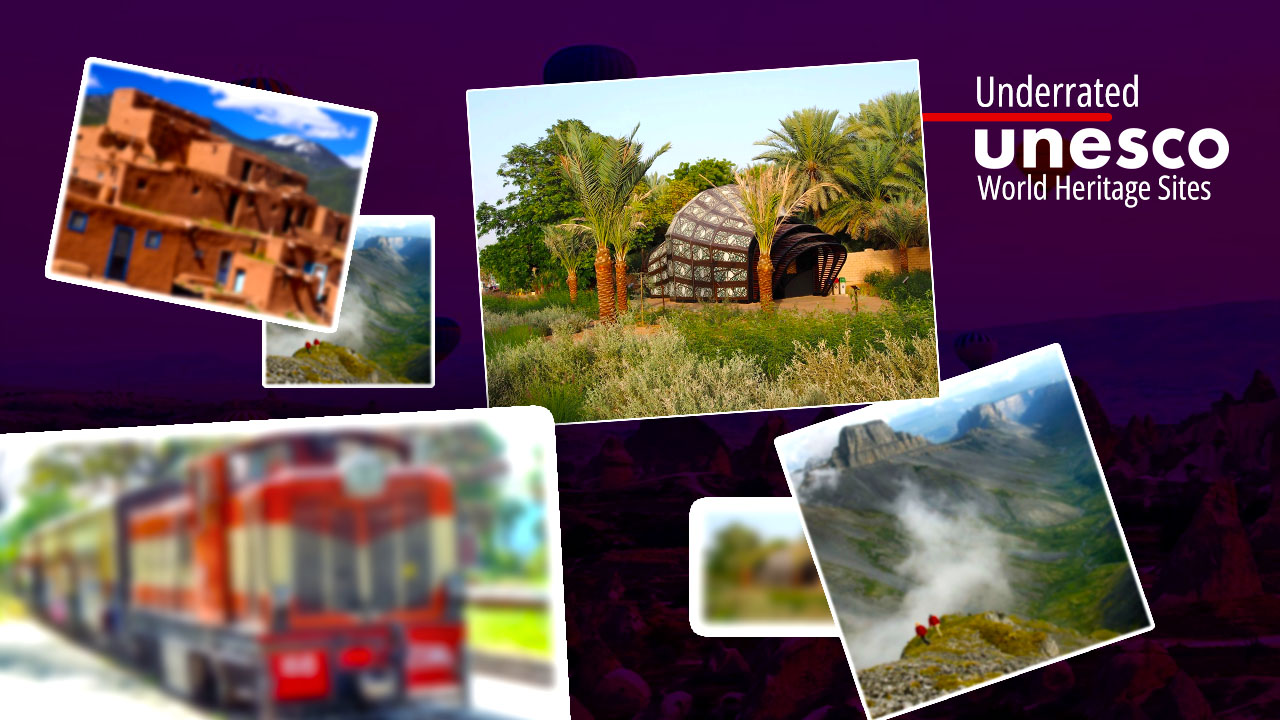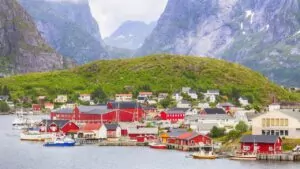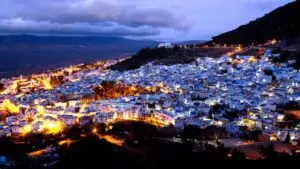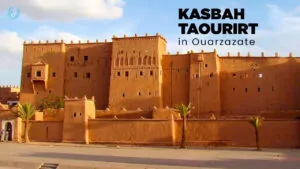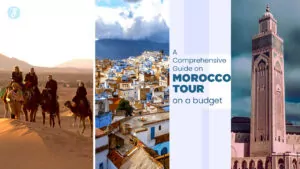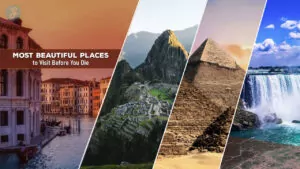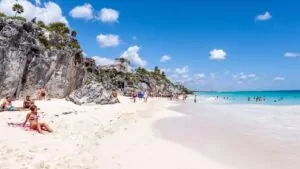When planning a trip, the allure of famous UNESCO World Heritage Sites like the Acropolis in Athens or Angkor Wat in Cambodia is hard to resist. These iconic places attract millions of visitors each year, promising a memorable experience steeped in history and cultural significance.
However, there are many underrated UNESCO World Heritage sites that offer equally captivating experiences without the tourist crowds. These lesser-known treasures, tucked away in remote regions or hidden in plain sight, provide a rare chance to explore the world’s wonders with more intimacy. From ancient cities to natural wonders, here are 20 UNESCO World Heritage Sites that are waiting to be discovered.
Underrated UNESCO World Heritage Sites
1. Al Ain Oasis—United Arab Emirates
Recognized by UNESCO: 2011
Best Time to Visit: November-March
Situated in the heart of the UAE’s desert, Al Ain Oasis has served as a sanctuary for travelers for more than 4,000 years. Encircled by the vast Rub Al Khali desert, the world’s largest continuous sand desert, this oasis offers a peaceful contrast to the bustling metropolises of Abu Dhabi and Dubai. Al Ain’s towering date palms, mango orchards, and the fragrant scent of fig trees make it a perfect place to unwind. The ancient falaj irrigation system, which channels water from the nearby mountains, is still in use today, providing lifeblood to the city’s farms and gardens.
Read More: Hidden Gems to Spend Your Summer Holiday in Europe
Visitors to Al Ain will appreciate its slower pace and lush environment, making it an ideal escape from the modern, high-energy life of the UAE. The city is rich with history, and a trip here offers an opportunity to explore Emirati culture at its roots.
Good to Know: You can catch a bus from Dubai to Al Ain every hour. The trip takes about two hours, and once you arrive, taxis are the best way to get around. Alternatively, rent a car in Dubai and enjoy the scenic drive.
2. Skellig Michael, Ireland
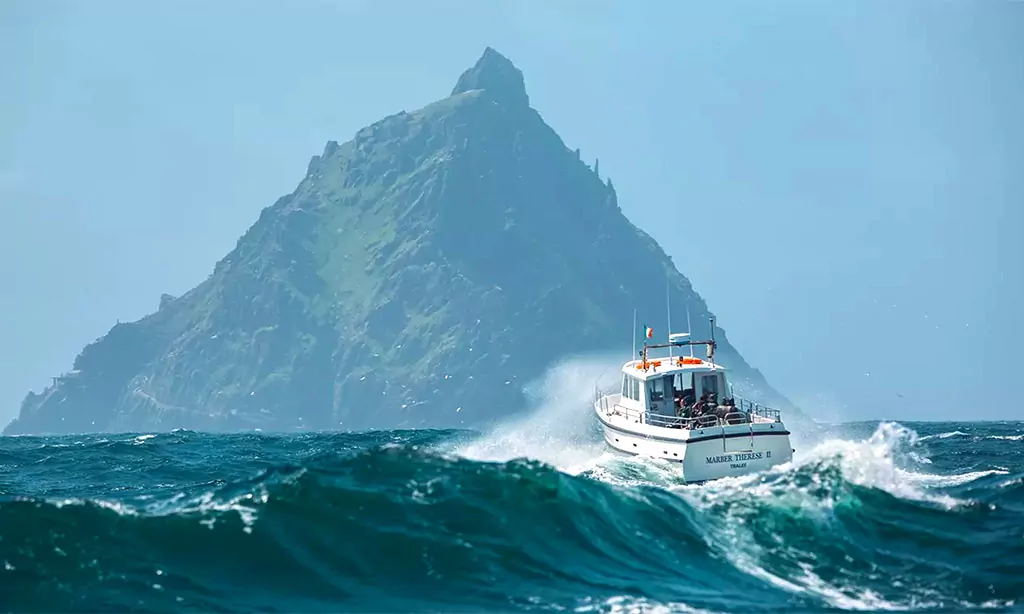
Recognized by UNESCO: 1996
Best Time to Visit: May 15-SSeptember 30
Perched on a rugged island off Ireland’s western coast, Skellig Michael is one of the country’s most remote and breathtaking UNESCO sites. Its claim to fame in recent years is its appearance in the “Star Wars” films, but its historical significance far predates the movies. Between the 6th and 8th centuries, Gaelic Christian monks founded a monastery atop the island’s peak. The monks’ stone huts, simple yet striking, remain intact today, a testament to their isolated way of life.
Visitors brave enough to make the climb will ascend over 600 stone steps, which the monks once used daily. At the summit, you’ll find sweeping views of the Atlantic as well as colonies of puffins, gannets, and razorbills.
Good to Know: Because only 200 visitors are allowed on the island each day, it’s essential to book your tickets well in advance—at least a month before your trip.
3. Mount Kōya, Japan
Recognized by UNESCO: 2004
Best Time to Visit: April-May, October-November
Mount Kōya, or Kōya-san, located on Japan’s Kii Peninsula, is a sacred site and the birthplace of Shingon Buddhism. The eight peaks of the Kii Mountains surround the mountain, which is home to Kongbu-ji Temple, a tranquil haven. Visitors can explore the Okunoin Cemetery, which is believed to be the resting place of Kobo Daishi, the founder of Shingon Buddhism.
More than 100 smaller temples dot the mountainside, many of which offer overnight lodging for visitors seeking a spiritual retreat. Visitors can hike ancient trails that meander through forests blanketed in mist, adding to the mystical atmosphere of the region.
Good to Know: To reach Kōya-san, take the Nankai Railway from Osaka’s Namba or Shin-Imamiya stations to Gokurakubashi Station. From there, a scenic cable car ride takes you to the temple settlement.
4. Archaeological Site of Troy—Turkey
Recognized by UNESCO: 1998
Best Time to Visit: April-November
The city of Troy, immortalized in Homer’s Iliad, holds a prominent place in both myth and history. Situated in modern-day Turkey, the ancient city of Troy once connected Europe and Asia, making it a thriving center for trade and culture. Although most know Troy for the legendary Trojan War, the real-life city is just as captivating. With over 4,000 years of history, Troy has seen the rise and fall of many civilizations.
Visitors can explore its ancient walls, public buildings, and archaeological sites, offering a glimpse into a city that has been continuously inhabited for millennia.
Good to Know: Troy is about 20 miles from Çanakkale, and you can take a 45-minute minibus from there or make the six-hour drive from Istanbul.
5. Mammoth Cave National Park—USA
Recognized by UNESCO: 1981
Best Time to Visit: May-August
Mammoth Cave, located in Kentucky, holds the title of the world’s longest cave system, with over 400 miles of explored passageways. The park, however, offers more than just underground adventures. Above ground, visitors can explore 52,000 acres of dense forest, rolling hills, and rivers, including the picturesque Green River.
Read Also: Most Beautiful Places to Visit in Greece
Inside the cave system, visitors can explore chambers adorned with stunning stalactites, stalagmites, and gypsum formations, as well as subterranean rivers. Mammoth Cave offers a truly unique experience for adventurers, with guided tours available to explore this underground wonderland.
Good to Know: Mammoth Cave is near Brownsville, Kentucky, a two-hour drive from Lexington or an hour and a-half from Nashville.
6. Lake Turkana National Parks, Kenya
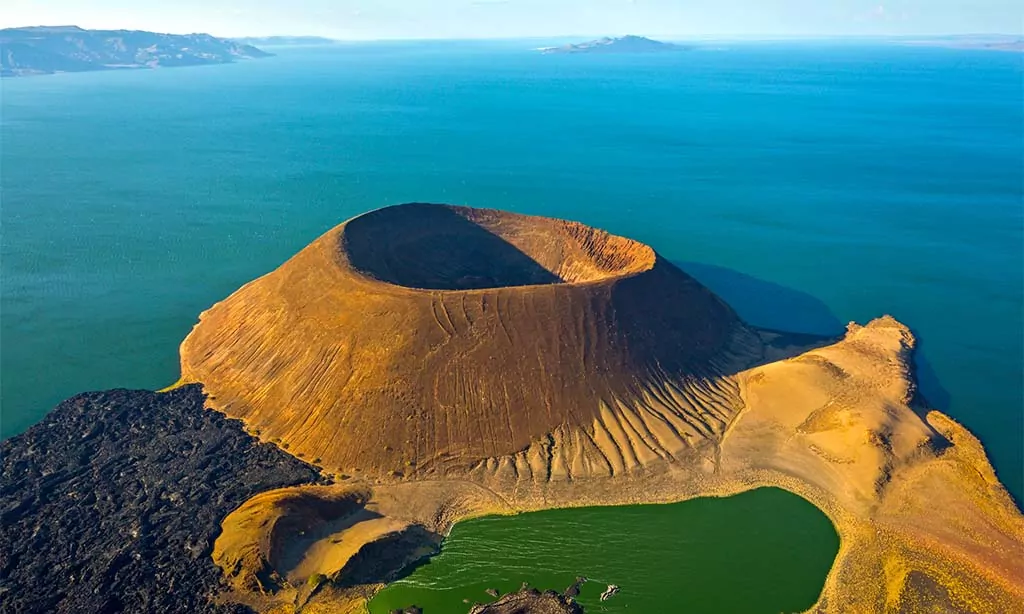
Recognized by UNESCO: 1997
Best Time to Visit: January-February, July-October
Lake Turkana, also known as the Jade Sea, is the world’s largest desert lake and a unique natural wonder located in Kenya’s Great Rift Valley. The UNESCO designation covers three national parks: Sibiloi, Central Island, and South Island. The lake’s vibrant blue-green waters are home to Nile crocodiles and a wide variety of bird species, including flamingos and pelicans.
Sibiloi National Park is known for its archaeological significance, with ancient fossils such as the 1.5-million-year-old Turkana Boy skeleton being unearthed here. Central Island National Park offers volcanic islands and stunning landscapes, while South Island is rich in wildlife, from zebras to giraffes.
Good to Know: Reaching Lake Turkana requires a bit of effort. The nearest airport is in Lodwar, and from there, visitors must arrange transportation to Kalokol and take a boat to Central Island.
7. Mountain Railways of India—India
Recognized by UNESCO: 1999
Best Time to Visit: March-May, October-December
India’s Mountain Railways are a collection of three iconic railways: the Darjeeling Himalayan Railway, the Nilgiri Mountain Railway, and the Kalka-Shimla Railway. These railways were among the first to transport passengers through mountainous terrain, and they remain engineering marvels today. Travelers can experience breathtaking views of the surrounding hills, valleys, and forests as they wind their way through tunnels and over bridges.
The Darjeeling Himalayan Railway, also known as the “Toy Train,” is perhaps the most famous of the three and offers passengers stunning views of the Himalayas.
Good to Know: The lower stations of these railways are easily accessible by bus or car, and they remain popular with travelers looking for a unique journey through India’s scenic landscapes.
8. Bamberg—Germany
Recognized by UNESCO: 1993
Best Time to Visit: May-September
Bamberg, a picturesque Bavarian town, is spread across seven hills, each crowned with a church or castle. The UNESCO designation covers Bamberg’s Old Town, which is renowned for its medieval and baroque architecture. Cobblestone streets, half-timbered houses, and beautiful squares make Bamberg one of Germany’s most romantic destinations.
Visitors should not miss the Bamberg Cathedral, a Romanesque masterpiece, as well as the Altes Rathaus, which is uniquely situated on a bridge over the Regnitz River.
Good to Know: Bamberg is a three-hour train ride from Frankfurt Airport.
9. Shark Bay—Australia
Recognized by UNESCO: 1991
Best Time to Visit: April-May
Shark Bay, located on the western coast of Australia, is a visually stunning landscape of beaches, cliffs, and seagrass meadows. Visitors to Shark Bay can explore its marine diversity, which includes dugongs (relatives of manatees), sea turtles, and dolphins. The bay is also home to stromatolites, ancient rock formations that provide insight into early life on Earth.
The bay’s unique combination of landscapes and wildlife makes it a must-see destination for nature lovers.
Good to Know: Shark Bay is a nine-hour drive or a two-hour flight from Perth, making it a remote but rewarding destination.
10. Cape Floral Region—South Africa
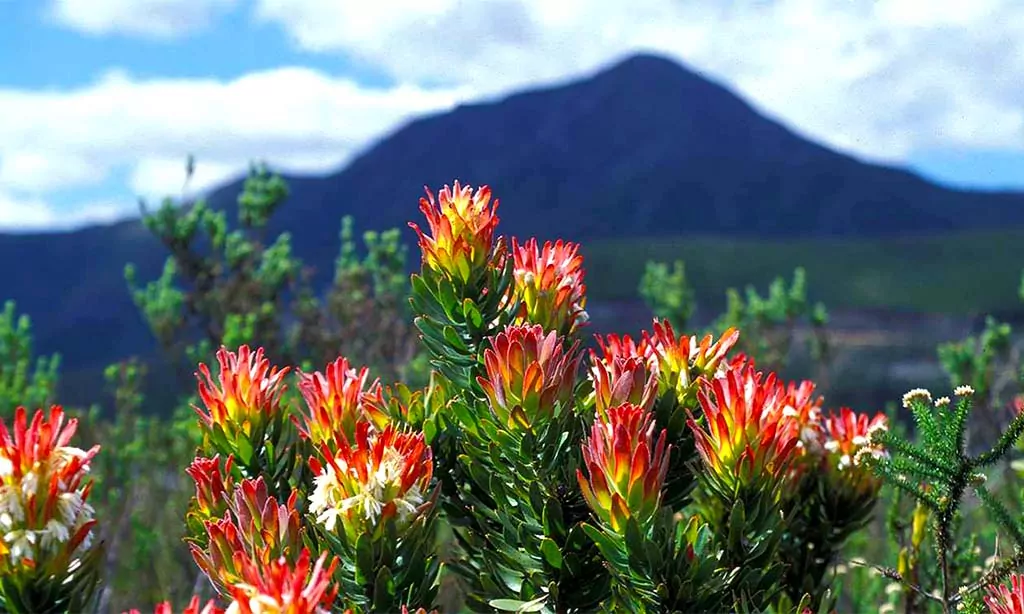
Recognized by UNESCO: 2004
Best Time to Visit: July-October
South Africa’s Cape Floral Region is one of the most biologically diverse places on the planet. Stretching over 35,000 square miles, the region is home to more than 9,000 plant species, many of which are unique to the area. The landscape is characterized by fynbos (a type of shrubland) and proteas, including South Africa’s national flower, the King Protea.
The Cape Floral Region is also home to rare wildlife, such as the Cape Mountain Zebra and the Cape Leopard. The diverse ecosystems make it a paradise for hikers and nature enthusiasts.
Good to Know: Cape Town is the perfect base for exploring the region, with most of the flora within a 45-minute drive from the city.
11. Willemstad—Curaçao
Recognized by UNESCO: 1997
Best Time to Visit: December-April
Willemstad, the capital of Curaçao, is a slice of Dutch colonial history in the Caribbean. The city’s pastel-colored buildings line the waterfront, creating a vibrant and picturesque scene. Visitors can wander through the cobblestone streets of the historic center, exploring gabled houses, museums, and the famous Queen Emma Bridge.
Willemstad’s mix of Dutch, African, and Indigenous cultures is reflected in its festivals, music, and cuisine, making it a fascinating destination for travelers.
Good to Know: Curaçao International Airport offers direct flights to Willemstad from many cities in Europe and the Americas.
12. Wieliczka Salt Mines—Poland
Recognized by UNESCO: 1978
Best Time to Visit: June-August
Located just outside Krakow, the Wieliczka Salt Mines are a surreal underground world that stretches more than 1,000 feet deep. The mines, which date back 700 years, are a maze of tunnels, chambers, and sculptures—all carved from salt. One of the most striking features is the Chapel of St. Kinga, an underground cathedral adorned with salt chandeliers and religious sculptures.
Visitors can take guided tours of the mines, which showcase the intricate artistry of generations of miners.
Good to Know: The tours cover up to two miles of underground passageways and last about three hours.
13. Nahanni National Park—Canada
Recognized by UNESCO: 1978
Best Time to Visit: June-August
Located in Canada’s Northwest Territories, Nahanni National Park is a vast wilderness of mountains, rivers, and forests. The park is named after the South Nahanni River, which offers some of the most thrilling whitewater rapids in the world. Visitors can also explore Virginia Falls, which are twice the height of Niagara Falls.
Nahanni is home to an array of wildlife, including grizzlies, wolves, moose, and bald eagles. The park is a paradise for adventurers, with options for hiking, canoeing, and multi-day treks.
Good to Know: Getting to Nahanni requires a floatplane charter from Fort Simpson, but the remote location ensures an unspoiled and tranquil experience.
14. The Sassi of Matera, Italy
Recognized by UNESCO: 1993
Best Time to Visit: May-June, September-October
Matera, located in southern Italy, is one of the world’s oldest continuously inhabited cities. The ancient cave dwellings, known as the “Sassi,” have been carved into the rock over millennia and served as homes, churches, and palaces.
The surrounding Park of the Rupestrian Churches is dotted with stone monasteries and frescoed churches, offering a glimpse into the city’s rich history.
Good to Know: The best way to reach Matera is to fly into Bari and rent a car, although bus services are also available from Rome and Florence.
15. San Sebastián del Oeste, Mexico
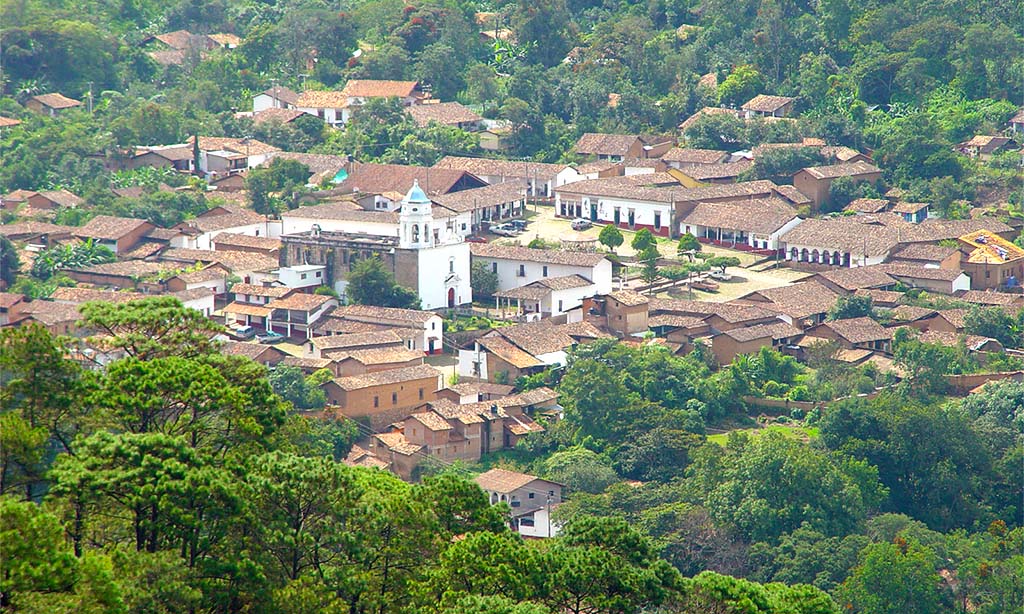
Recognized by UNESCO: 2001
Best Time to Visit: May-July
San Sebastian del Oeste is a hidden gem in the mountains of Jalisco, Mexico. Once a booming mining town, the village has preserved much of its 17th-century architecture, including Spanish-style buildings and cobblestone streets. Visitors can explore old mines, hike through the surrounding forests, or take a guided tour of the town’s historic sites.
The town’s elevated location makes it a refreshing escape from the heat, and its quiet charm is perfect for a peaceful retreat.
Good to Know: San Sebastián del Oeste is a 90-minute drive from Puerto Vallarta, and day tours are available from the city.
16. Šibenik Cathedral — Croatia
Recognized by UNESCO: 2000
Best Time to Visit: June-September
Šibenik Cathedral, located on Croatia’s Adriatic coast, is a stunning example of Gothic and Renaissance architecture. The cathedral’s exterior is adorned with 71 sculpted faces, each one unique, while the interior is a showcase of frescoes, sculptures, and vaulted ceilings. Visitors can also climb the bell tower for panoramic views of Šibenik and the nearby coastline.
The city of Šibenik itself is a charming coastal town that offers a more laid-back experience compared to Croatia’s more famous tourist spots like Dubrovnik and Split.
Good to Know: Šibenik is easily accessible from Split or Zadar, both of which have international airports.
17. Taos Pueblo—USA
Recognized by UNESCO: 1992
Best Time to Visit: September-October
Taos Pueblo, located in northern New Mexico, is one of the oldest continuously inhabited communities in the United States. The adobe buildings, made from mud bricks, stand against the backdrop of the high desert, creating a striking visual contrast. Visitors can wander through the pueblo’s streets and alleys, learning about the Native American tribe that has lived here for over 1,000 years.
A guided tour is recommended to fully appreciate the history and culture of Taos Pueblo.
Good to Know: Taos Pueblo is a two-hour drive from Albuquerque or a shorter drive from Santa Fe.
18. Rock Art of Alta—Norway
Recognized by UNESCO: 1985
Best Time to Visit: May-October
Alta, located in northern Norway, is home to one of the world’s largest collections of prehistoric rock art. The carvings, etched into the granite cliffs, depict animals, humans, and boats, offering a glimpse into the lives of the early Sami people who inhabited the region.
Visitors can also learn more about Sami culture at the Alta Museum, which provides insight into the history of this indigenous group.
Good to Know: The rock art is best viewed in summer when the snow has melted, and the site is accessible to visitors.
19. Valletta—Malta
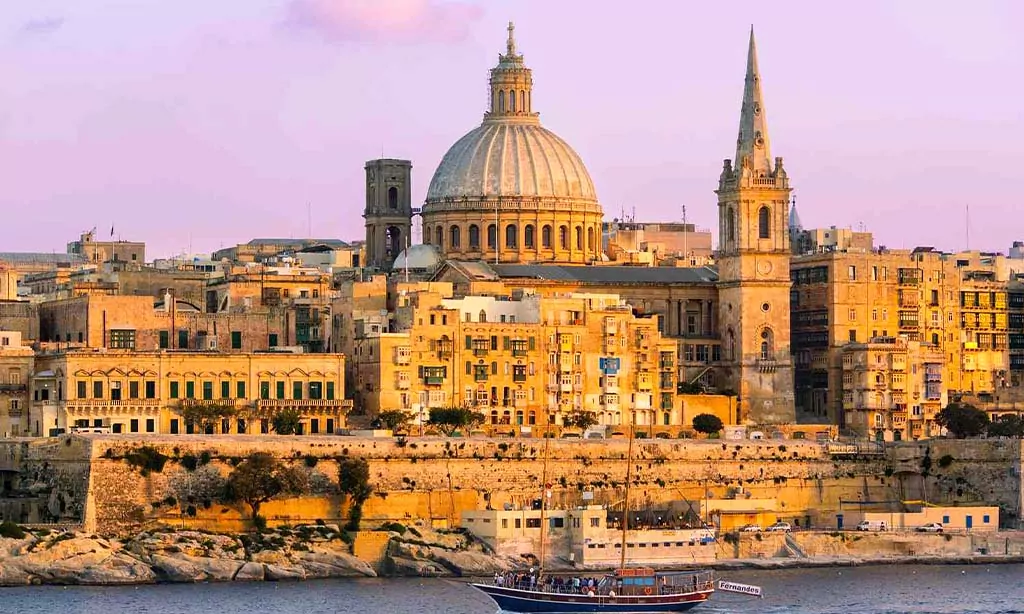
Recognized by UNESCO: 1980
Best Time to Visit: June-September
Valletta, Malta’s capital, is a stunning blend of history, culture, and modern charm. The city’s skyline is dotted with fortresses, churches, and grand palaces, while its narrow streets lead to hidden squares and bustling markets. Valletta’s history is deeply connected to the Knights of St. John, and visitors can explore St. John’s Co-Cathedral, known for its Baroque architecture and tombs of the knights.
The city also boasts a lively arts scene, with galleries, theaters, and festivals throughout the year.
Good to Know: Valletta is accessible via flights from major cities in Europe, although there are no direct flights from the U.S.
20. Coffee Cultural Landscape of Colombia—Colombia
Recognized by UNESCO: 2011
Best Time to Visit: December-March
Colombia’s Coffee Cultural Landscape is a lush region nestled in the Andes, where visitors can immerse themselves in the world of coffee production. The hilly terrain is dotted with coffee plantations, where you can learn about the cultivation process and participate in tastings. The region’s picturesque villages, such as Salento and Filandia, offer a glimpse into daily life in the coffee highlands.
Adventurers can explore the nearby Los Nevados National Park, which offers hiking trails through cloud forests and high-altitude peaks.
Good to Know: Visitors can take a bus from Medellin to Salento, a journey of about seven hours, or fly to Armenia for a shorter trip.
Final Thoughts
These 20 underrated UNESCO World Heritage Sites offer an extraordinary chance to explore some of the world’s most remarkable places without the typical tourist crowds. From ancient cities and remote islands to stunning natural landscapes and rich cultural histories, each destination provides a unique and unforgettable experience.
Whether you’re seeking a peaceful escape in nature or a journey through history, these hidden gems are well worth the extra effort to visit. So, add these incredible places to your travel list and prepare to be amazed by the world’s lesser-known wonders.

